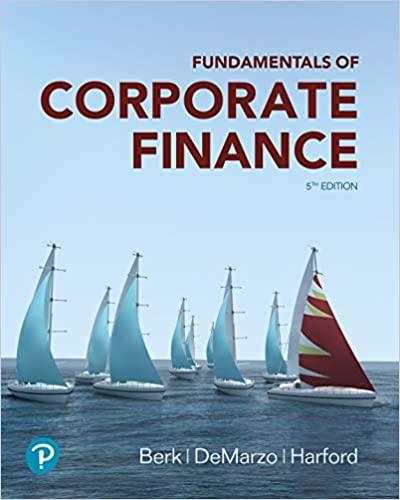Free Cash Flow Break Even 15 Points (15% of Grade) Student Name First Last Given the data below: calculate the Break Even Number of Units 1) Calculate the Break Even # of Units 2) Prepare a schedule showing the profitability with sales 20% less than break-even and 20% greater than break-even 3) Calculate the Break Even in Units if Variable Cost Per Unit $450 Sales Price Per Unit S600 Variable Cost Per Unit $350 Fixed Costs $2,000,000 1) Break Even Units 2) Schedule 3) Break Even VC = $450 per unit Free Cash Flow Break Even Financial 20 Points (20% of grade) See Tablec 12-5 Page 417 Student Name First Last Complete the Schedule Below Calculating Earnings Per Share a) No Debt : $400,000 Common Equity, 4,000 Shares 30% Tax Rate Net Income to Common Earnings Shareholders Per Share EBT Taxes EBIT Interest $40,000 $80,000 S120,000 S160,000 b) $100,00 debt; 7% interest; S300,000 Common Equity: 3,000 shares; 30% Tax Rate Net Income to Common Shareholders Earnings Per Share Interest EBT Taxes EBIT $40,000 $80,000 $120,000 S160,000 c) $200,000 debt. 7% interest; $200,00 Common Equity, 2,000 shares, 30% Tax Rate Net Income to Common Earnings Shareholders Per Share | EBT Taxes | EBIT Interest $40,000 $80,000 $120,000 $160,000 Free Cash Flow Break Even Financial Leverage Ca Student Name First Last 40 points (40% of Exam) From the Data Below Calculate the Free Cash Flowand the: See format Table 11-5 page 380 1) Simple Payback 2) Discounted Payback 3) Net Present value 4) Internal Rate of Return 5) Profitability Index Initial Investment Sale of Old Equipment Net of Taxes Renovation of Space $20,000,000 $500,000 $1,000,000 Year 1 Year 2 Year 3 Year 4 Year 5 Sales Units Sold Price 75,000 100,000 120,000 105,000 85,000 Variable Fixed Costs Costs $250 $12,000,000 $1,000,000 $250 $16,000,000 $1,000,000 $250 $19,200,000 $1,000,000 $250 $16,800,000 $1,000,000 $200 $13,600,000 $1,000,000 Depreciation $410,000 $410,000 $410,000 $410,000 $410,000 Tax Rate Required Rate of Return No Change in net Working Capital 25.00% 8.00% Free Cash Flow Break Even Financial Leverage Cash Budget 35 points (35% of Grade) Student Name First Last Given the information below prepare a cash budget for January Through June October November December January February March April May June July August September October Sales S300,000 $330,000 $350,000 $400,000 S420,000 S440,000 $370,000 $360,000 $340,000 $310,000 $280,000 $250,000 $300,000 Salaries Purchases Rent Other Taxes Interest Capital $195.000 $90,000 $7,500 $13,000 $30,000 $214,500 $99.000 $7,500 $13,000 $227,500 $105,000 $7.500 $13,000 $17.500 $260,000 $120,000 $7,500 $13,000 $15,000 $45,000 $273,000 $126,000 $7.500 $13,000 S286,000 $132,000 $7,500 $13,000 $17.500 $240,500 $111.000 $7,500 $13,000 $15,000 $234,000 $108,000 $7,500 $13,000 $221,000 $102,000 $7,500 $13,000 $25,000 S201,500 $93,000 $7,500 $13,000 $15,000 $182,000 $84,000 $7.500 $13,000 $17.500 S162,500 $75,000 $7.500 $13,000 $195,000 $90,000 $7.500 $13,000 $15,000 Beginning Cash Minimum Cash Balance $70,000.00 S50,000.00 Sales are collected: 15% month of sale 50% month after sale 30% secomd mont after sale 5% third month afer sale Bad Debt 2% of sales Salaries Paid in month After Expense Purchases Rent, Other, Taxes, Capital Paid 2 months after expense Paid in month incurred 1% per month on cummulative borrowing Interest on Short Term Borrowing










